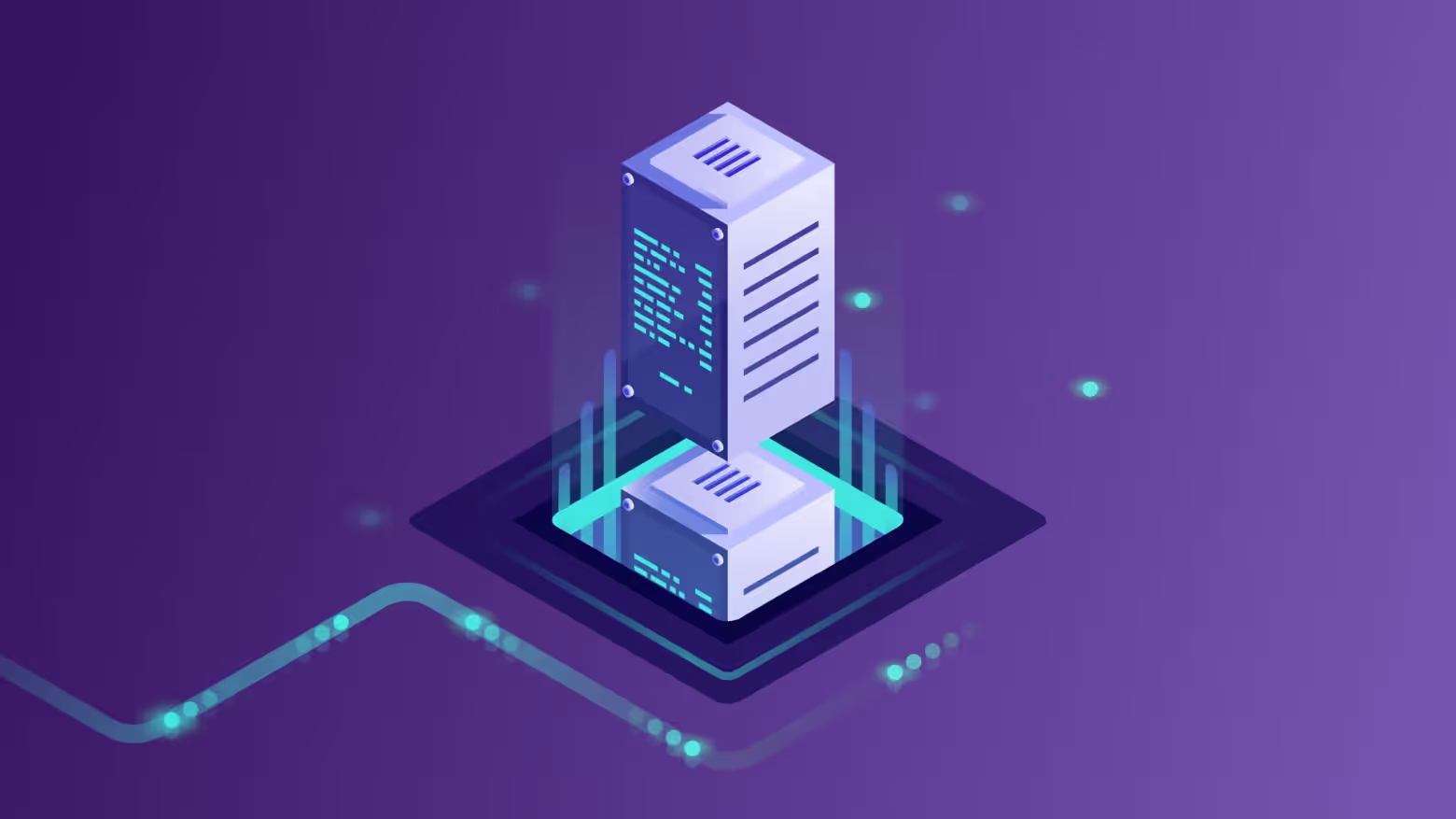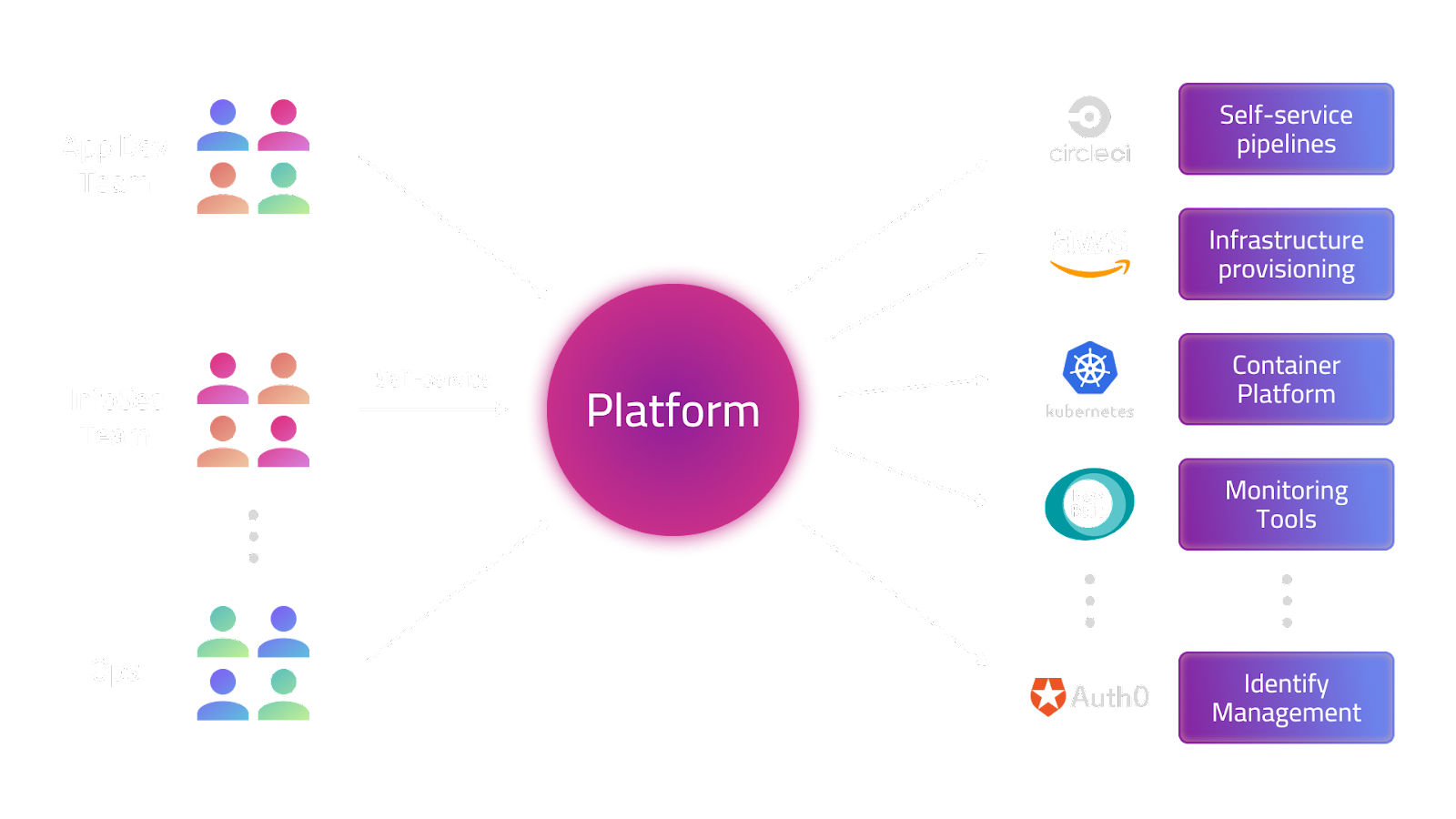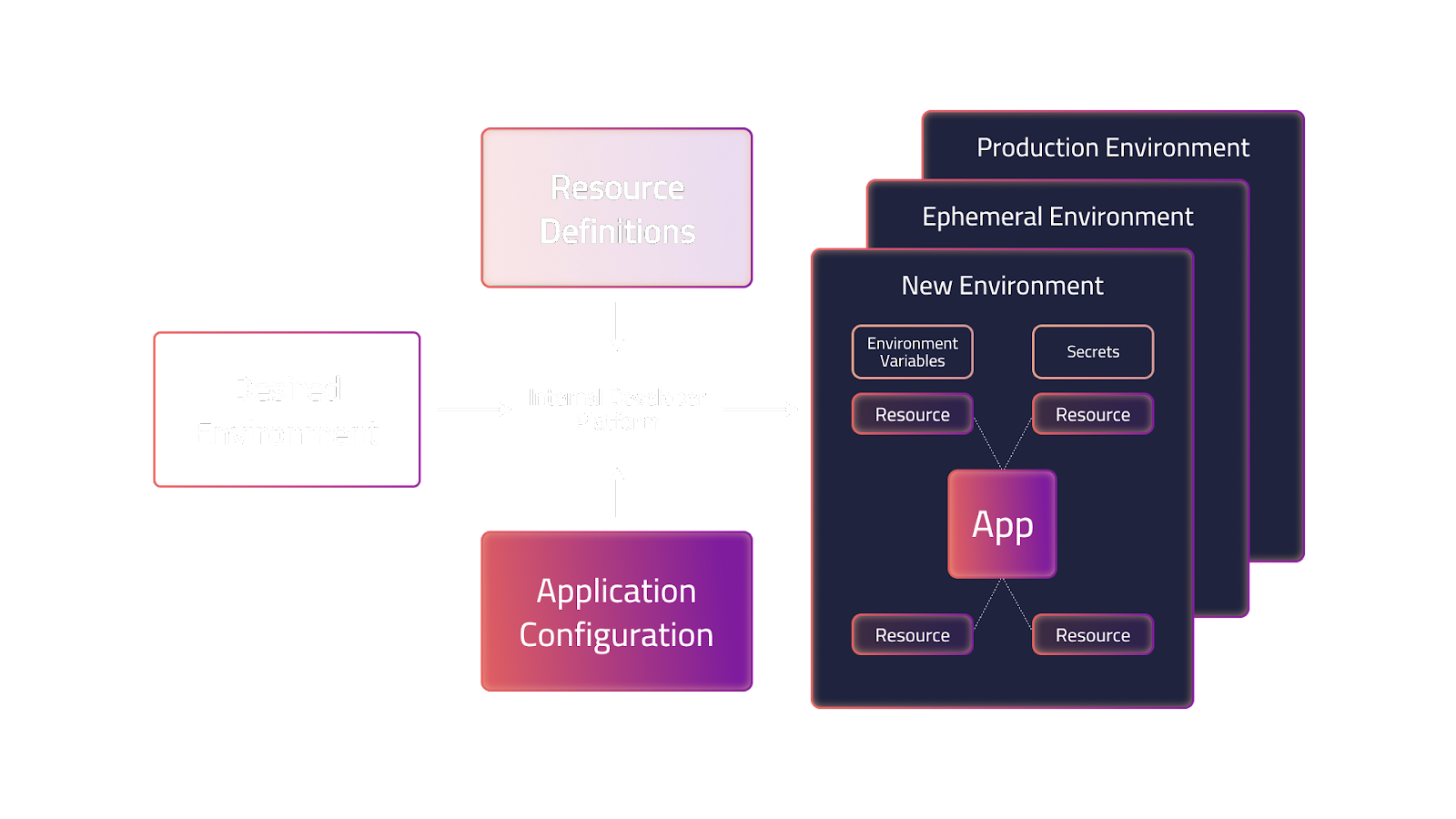
What is an Internal Developer Platform?

Imagine a future where software engineers can instantly write, test, and release code without impediments or delays by waving their magic wands. A world without infrastructure, dependencies, or deployment pipelines for developers. This universe is attainable with an Internal Developer Platform (IDP).
An Internal Developer Platform is an infrastructure that enables developers to swiftly design, test, and deploy software applications. IDPs have grown in popularity in recent years as businesses see the advantages of allowing developers greater autonomy and shortening the time to market for new products and services.
This article will discuss Internal Developer Platforms, their advantages, and how they can alter software development inside an organization. Prepare yourself to explore the enchantment of IDPs!
Internal Developer Platform: The Basics

Internal developer platforms provide developers with easy access to the tools and technologies they need to build and deliver compliant code during their regular job.
It's important to note that the term "internal developer platform" is somewhat nebulous, as it can refer to a wide range of platform technology solutions depending on the organization in question.
However, the term is most frequently used in cloud development, as these platforms help bridge the gap between previously incompatible services and procedures, resulting in more productive hybrid workplaces.
Puppet's State of DevOps study identifies three characteristics of advanced engineering firms, one of which is the presence of an internal developer platform, and the other two are integrated security and automated change management.
Humanitec surveyed 53 different teams to supplement this study. According to the results, teams in which an Ops/DevOps designer spends more than 8 hours a week managing infrastructures scripts and integrations saw a remarkable rise after implementing IDP, with the same work taking just 1.5 hours per week.
IDPs can be a game-changer when creating and deploying cloud-native apps and transferring legacy ones to the cloud.
What are the Components of Internal Developer Platforms?

To offer a consistent setting, automate mundane processes, and hide the underlying infrastructure, an IDP requires a few essential parts, such as
Infrastructure Orchestration
Infrastructure orchestration is a crucial component of an IDP that enables developers to provide and manage infrastructure resources like servers, databases, and networks.
This assures that the infrastructure is constantly accessible, scalable, and deployed on demand, hence removing the need for human intervention.
Role-Based Action Management
An important component of an IDP. Role-based action management guarantees that only authorized users can conduct certain activities on the platform.
This is accomplished using role-based access control (RBAC) systems, which allow administrators to specify roles and permissions for various individuals or groups. This guarantees that users only have access to the tools and resources they need, and it contributes to the platform's security.
Application Configuration Management
Application configuration management is a further essential component of an IDP that allows developers to manage and version control application settings.
This contains configuration files, environment variables, and secrets that are kept in a centralized repository and can be readily distributed across several environments. Application configuration management often employs Ansible and Chef as configuration management tools.
Deployment Management
Deployment management is a crucial aspect of an IDP that helps developers deploy applications to various environments, including development, staging, and production.
This is accomplished using continuous integration and continuous delivery (CI/CD) pipelines, which automate the build, testing, and deployment processes.
Environment Management
Environment management is a vital IDP component that helps developers manage several environments and assure consistency and reproducibility.
Infrastructure-as-code (IaC) solutions are used to describe and deliver infrastructure resources in a consistent and repeatable manner.

Observability
Observability is a crucial feature of an IDP that allows developers to observe and debug applications in real-time. This comprises aspects of infrastructure monitoring such as logging, analytics, and tracing, which offer insight into application performance and behavior.
Who Needs an Internal Developer Platform?
Internal Developer Platforms (IDPs) are advantageous for any organization that produces software applications, regardless of size or sector.
IDPs offer a single platform for managing infrastructure and development tools, allowing organizations to expedite the software development process and enhance cooperation amongst development teams.
Here are some frequent use cases of IDPs:
DevOps Teams
DevOps teams oversee the entire software development lifecycle, from development to deployment. IDPs can assist DevOps teams in automating jobs, simplifying procedures, and enhancing development and operations team cooperation.
Startups and SMEs
Smaller organizations and startups sometimes have limited resources and must work swiftly to bring their products to market. IDPs can assist these organizations in accelerating their software development by automating repetitive operations and providing a consistent development environment.
Google's Kubernetes platform, for instance, offers companies a scalable, open-source platform for managing containerized applications.
Enterprise Software Development
Often, the software development processes of large organizations are complicated, including several teams and infrastructure resources. IDPs can aid in the simplification of these procedures by offering a consistent development, testing, and deployment platform.
Government Agencies
Compliance with rules and security standards is an essential requirement for software development for government bodies. IDPs can assist these enterprises in ensuring that their applications are safe, compliant, and satisfy user requirements.
For instance, the U.S. General Services Administration (GSA) has created Cloud.gov, an IDP that offers a secure platform for government agencies to build and deploy cloud-based applications.
What Are the Benefits of IDPs for Developers and Engineers?
An Internal Developer Platform (IDP) is a collection of tools, services, and infrastructure that enables developers to swiftly design, test, and deploy software applications.
To do this, an IDP must contain several essential components that collaborate to offer a consistent environment, automate repetitive activities, and hide the underlying infrastructure.
Lower Costs
IDPs can also save expenses by decreasing the need for human intervention and enhancing overall efficiency.
By automating operations and decreasing mistakes, businesses can cut software development costs and increase their development process's return on investment (ROI).
Faster Time-To-Market
IDPs can drastically shorten the time required to introduce new goods and services.
Organizations can speed their software development process and minimize time-to-market by automating repetitive operations and offering a uniform environment.
Improved Monitoring and Analytics
IDPs can also offer enhanced monitoring and analytics capabilities, allowing businesses to watch the performance of their applications and immediately detect problems.
Monitoring application performance and use enables organizations to make data-driven choices and enhance the software development process.
Enhanced Scalability
IDPs can boost scalability by offering a management platform for infrastructure resources like servers, databases, and networks.
This enables enterprises to grow their infrastructure without human intervention to match the demands of their applications.
Increased Security
IDPs can boost security by offering a centralized user access and permissions management platform.
RBAC systems can be used to guarantee that only authorized personnel have access to certain resources, hence lowering the chance of security breaches.
Improved Collaboration
IDPs can also promote cooperation amongst development teams since they provide a centralized platform for developers to collaborate.
Using the same tools and procedures allows developers to quickly exchange code and collaborate on projects, improving cooperation and enhancing productivity.
Build Your IDP Now
To be successful, an IDP implementation strategy must be developed specifically for each organization. The first step is to roll out minor improvements to help the development teams with day-to-day tasks:
Identify Automation Opportunities
Identify activities that can be automated in your software development process as you construct your IDP. These can involve repetitive operations, manual testing, and build and deployment procedures that can be automated.
By automating these operations, developers can spend more time building code and delivering new features.
Use Open-Source Tools
Use open-source resources that help fill gaps in your development process while creating your IDP. The CNCF Cloud Native Interactive Landscape is valuable for locating open-source solutions to enhance software development.
By using existing open-source technologies, you can save time and money while developing a more efficient IDP.
Integrate New Developments
It is crucial to incorporate new technologies into your IDP without disturbing your development lifecycle as you do so. Ensure that your developers have access to the new tools and resources they need without requiring extra permission or training.
By making the integration process easy and pleasant, you will gain the support of your development team and lessen change resistance.
Measure the Post-IDP Impact
After implementing your IDP, assessing its effect on development performance is crucial. This can include calculating time-to-market, boosting developer productivity, or decreasing downtime.
Communicate these data with all relevant parties, including developers, product managers, and C-level executives, to demonstrate the benefit of your IDP implementation.
Repeat the Process for Improvement
The construction of an IDP is one of constant development. When you discover additional automation possibilities and process gaps, include them in your IDP.
By repeatedly constructing, measuring, and enhancing, you will establish a culture of continuous improvement that will result in a more efficient and successful development process.
Final Words
Software development is no longer a nice to have in today's fast-paced world but a requirement for organizations to survive and prosper. IDPs, or Internal Developer Platforms, solve this problem by offering a single location to administer software and hardware used in the development process.
With the help of IDPs, organizations can innovate more quickly, enhance their capacity for teamwork, and get a leg up in the marketplace. Using an IDP is a great step to take if you want to take your software development to the next level.
Introducing mogenius - The Internal Developer Platform as a Service (IDPaaS)
The immense value of Internal Developer Platforms (IDPs) for improving development productivity is evident, but many organizations face challenges in implementing them due to significant upfront investment and internal skill requirements. mogenius provides your development team with a cost-effective, accessible all-in-one solution.
By providing comprehensive functionality and built-in developer tools, mogenius eliminates the time, cost, and complexity of building a custom platform, enabling your team to stop wasting time on ops work and focus on what truly matters instead - building great products.
Key Features of mogenius
Seamless Integration: Our platform is designed to integrate effortlessly with your existing technology stack, allowing for easy adoption and minimal disruption to your current processes.
Scalable Infrastructure: mogenius is built on a robust, cloud-based infrastructure that supports autoscaling and horizontal scaling, ensuring optimal performance and reliability.
Centralized Cloud Management: With a single, unified dashboard, you can efficiently manage your development environments, monitor performance, and gain valuable insights.
DevOps Automation: Streamline your development workflows with powerful automation features such as automated build processes, testing, and CI/CD pipelines.
Developer Self-Service: Empower your developers with self-service capabilities, allowing them to easily create, manage, and deploy environments without requiring ops support.
Enterprise-Grade Security: mogenius offers enterprise-grade security features, including DDoS protection, automatic SSL management, Web Application Firewall (WAF), and a built-in vulnerability scanner.
DevOps as a Service: Want to get DevOps completely off your plate? We offer a managed DevOps service to enhance your development capabilities further and provide expert guidance on best practices and optimization strategies.
mogenius enables you to implement a fully functioning IDP in a matter of weeks instead of spending months or years building your platform, involving high costs, a time-consuming setup, and ongoing management. mogenius is significantly simpler and more cost-effective, empowering your development team to easily deliver great products. See mogenius in action and request a demo today.
FAQ
Interesting Reads
The latest on DevOps and Platform
Engineering trends
Subscribe to our newsletter and stay on top of the latest developments


